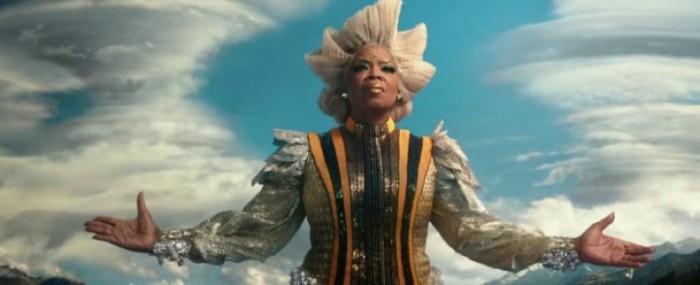Recent dialogue surrounding the new film adaptation of Madeleine’s L’Engle’s classic book, A Wrinkle in Time, pits the film’s quality against its desire to be an inclusive big budget production. Is it good merely because of this prerogative? Is that proper criticism?
It’s a fair question. Critics are hailing the Disney film as a progressive milestone for Hollywood due to its choice of director and diverse cast. Make no mistake, it is a big deal that a studio as influential as Disney handed over a movie of this magnitude to Ava Duvernay (Selma (2015)), a woman of colour. A 2017 study by the University of Southern California found that of the top 100 movies in 2016, a female director helmed only eight. The same study found that out of the top 1,100 movies since 2007, only four were directed by a woman of colour. A Wrinkle in Time stands as a beautiful aberration to Hollywood’s suffocating whiteness, and is truly refreshing from a representational standpoint. Ultimately, this is to the film’s benefit, but it isn’t the only thing DuVernay brings to the table.
A Wrinkle in Time follows Meg (Storm Reid), a bullied and insecure child who, after the disappearance of her scientist father (Chris Pine), becomes apathetic and despondent. When she and her family receive a visit from universe protector Ms. Whatsit (Reese Witherspoon), Meg, her brother Charles Wallace (Deric McCabe) and new friend Calvin (Levi Miller) literally travel the universe in search of their father. With the guidance of two other universe protectors, Mrs. Who (Mindy Kaling) and Mrs. Which (Oprah Winfrey), Meg tests her limits and learns how to believe in herself.
Thematically, A Wrinkle in Time is pretty standard as far as children’s movies go, preaching the importance of family and a healthy self-esteem. But it is the powerful dynamic within the central family that carries the film’s emotional weight, and moments that could have been cheesy are actually quite moving. DuVernay’s direction helps mask the film’s clichés. And while there are some narrative shortcomings that thaw at the film’s cohesion—such as questions of why exactly Meg’s peers treat her so poorly, or why Calvin chooses to go on the adventure so soon after meeting Meg—they don’t take away from the experience as a whole.
A Wrinkle in Time can often feel familiar, hitting each industry standard for big budget family films: Likable and simple characters, an easy-to-follow story, and lots of colours. Each of these elements works well enough to create a satisfying and entertaining film, yet DuVernay injects enough of her own voice to also make it feel decidedly different. Her experience in documentary and gritty realism provides a grounded aesthetic that contrasts well with the extraterrestrial sets that allows her to show off her flair for visual grandeur. The vibrant colours and eerie symmetry of the evil planet Camazotz are stunning, and a giant Oprah Winfrey guiding you through a cross-universe road trip (“tessering” as they call it) is truly something to behold. These creative decisions often make the film feel surprisingly weird, and the film is bolstered not only by its diversity, but also its idiosyncrasies. However, A Wrinkle in Time could have dived deeper into the darker elements of the story. Hidden behind a veneer of childish play is a film on the brink of becoming much bleeker. One can sense it wants to linger on the novel’s scarier and more mature moments, that it could become something its young audience looks back on and says, “I watched that as a kid??” For a story that warns against a contagious and menacing darkness, it is too bad DuVernay didn’t explore the narrative’s compelling trenches.
There is a certain life to A Wrinkle in Time that feels confoundingly new, and this is due in large part to DuVernay’s fresh perspective. A film about a young girl finding her place in the world, despite the universe’s inherent evils, resonates more in DuVernay’s hands than it would in a white director’s. The film is a progressive milestone, as well as a fun, though flawed, family film: Quality versus inclusivity becomes irrelevant because the two elements are intertwined. The film’s progressiveness and subversions propel what could have been a dull, CGI-filled children’s movie into something culturally important.










I’d like Mr. Simon to review “Love, Simon”. “Love, Simon” is another Hollywood production attempting to be culturally relevant.